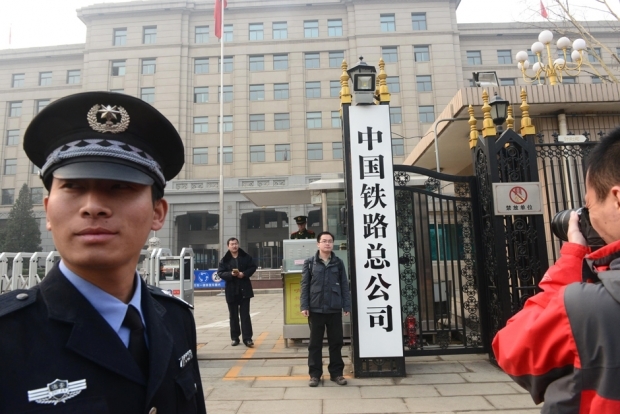After months of speculation, the reorganization of the State Council has finally been approved by the National People’s Congress.
Under the shake-up, China’s rail business will no longer be managed by the regulator. Three national agencies will be formed or beefed up—on health and family planning; food safety; and media and publication. Two others, the National Energy Administration and the National Oceanic Administration, also saw their scope expanded. These changes, as well as members of the new cabinet, are a matter of great public concern, given their impact on the country’s development.
The reorganization is notable for several reasons.
First, it is primarily a response to “some long-standing, prominent social problems,” as Vice Premier Ma Kai put it in the blueprint for the overhaul. It is also targeted at issues of public concern, including rail operations, health care, and food and drug safety.
Problems in these areas became prominent as the country grew more developed; some are serious, needing urgent attention. Apart from the railway problems, which were a legacy of the planned economy, the rest emerged after the country undertook market reform.
Second, the overhaul seeks incremental rather than drastic change. It streamlined functions without upsetting vested interests. This is clear from the names of the new or newly expanded agencies.
Third, agencies in charge of macro-economic planning were left untouched, and no government role was abolished, only transferred. Thus, government power was not only not weakened, it was in fact strengthened. The reason for this cautious approach could be found in Ma’s warning of the difficult economic and social challenges that await.
Compared with the six previous overhauls of ministries, the reform this time appears to be more low-profile and pragmatic. No grand theme was trotted out, unlike in 1982, 1998, and 2003, when reorganization was likened to a revolution. Also absent were the fierce ideological debates of the past on the relationship between government and market, big or small government, institutional reform versus systemic reform, and the ills of bureaucratic thinking.
The focus this time is on “changing the functions of government.” Notably, the full title of the blueprint mentions this, alongside the goal of “organization reform.”
In fact, no organizational reform is possible without changing the substance of government function. If only cosmetic changes are made, and government power that should be weakened is instead strengthened, the so-called reorganization will contribute nothing to the goal of building a sound market economy, or help the country solve its immense economic, social, political, and environmental problems.
Last month, the second plenary session of the Party’s 18th Central Committee said the reorganization should “reduce or decentralize the approval procedures for investment projects; reduce or decentralize the vetting and approval for production and business activities; reduce the layers of qualification and eligibility licensing; reduce government fees and payments; streamline overlapping government duties; simplify industrial and commercial registrations; improve the management of social organizations; improve and strengthen macroeconomic planning; strengthen construction of basic infrastructure; and improve the rule of law.” These are good guidelines for the new government.
To be sure, changing government functions isn’t easy, and the key lies in clarifying the relationship between the government, market, and people. First, power must be restricted. This means the government must refrain from intervening in business, investment activities, public affairs, and social intermediary organizations. The government should let the market allocate resources. It leads, but must join hands with social groups and civil society in working for social progress.
Over the three decades of Reform and Opening-Up, interest groups have only grown stronger. Those in power would always seek to strengthen their control, helped along by people who have been more than willing to overlook the rules. No serious attempt at reform can ignore this. As previous government reorganizations have shown, this is the most difficult challenge reformers must overcome.
Thus, if this reorganization is to succeed, the government must do much more than redraw the organizational chart and spell out the new job scopes. To really serve the people, as their job demands, government agencies and officials must have self discipline, and their conduct be subjected to public scrutiny. It is the people that grant government its power; this is the view that government officials must take to heart. Only then can an exercise to limit government power succeed. Thus, political reform in fact goes hand in hand with government reorganization.
Admittedly, the round of changes this time is much milder than expected. Like its continuing task to strengthen the country’s market economy, the government must keep making adjustments to its reorganization, to ensure slow but steady change. The restructuring of government is but a work in progress.




